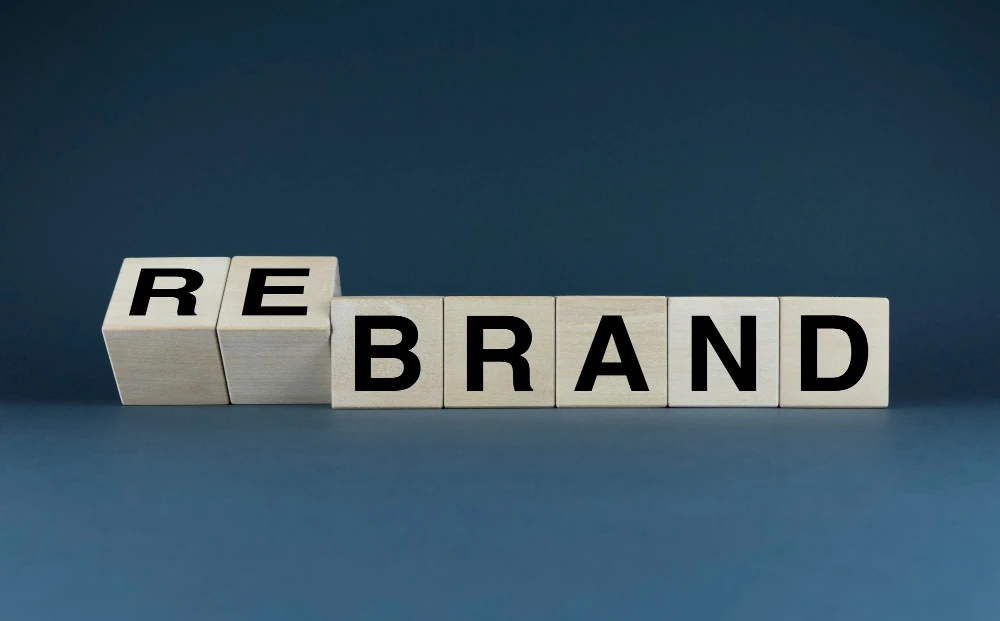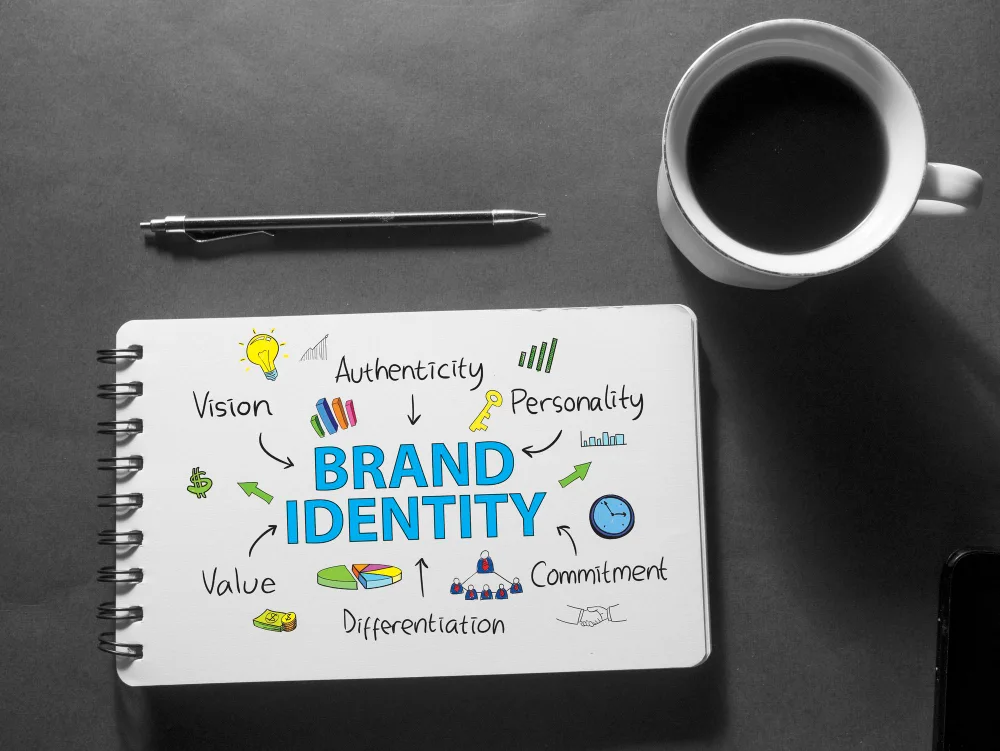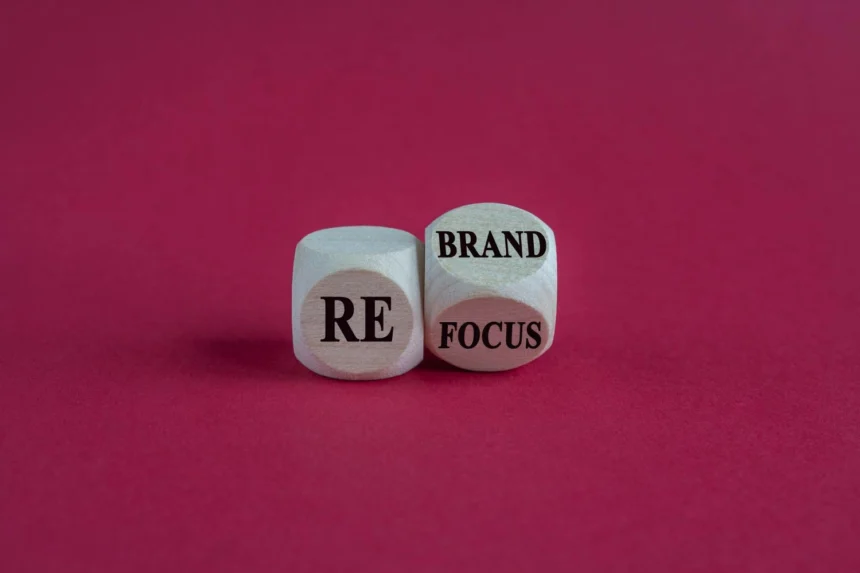Rebranding can breathe new life into your business – but it also carries a lot of risk. If you don’t plan carefully, rebranding mistakes in 2025 can confuse or even drive your customers away. In fact, the worst rebranding failures occur when there’s no clear strategy or purpose. Without defined goals, a new logo or name can erode trust and hurt sales. Consider what happened to some familiar names: Tropicana’s 2009 overhaul replaced its iconic orange image with a minimalist design and resulted in a loss of nearly $30M in sales in just a few months.
The Gap is another famous example – its 2010 redesign was so wrong that it had to revert to the old logo after only six days due to customer outrage. In this guide, you’ll learn advanced (but easy to follow) information on how to avoid rebranding mistakes in 2025. We’ll cover how to set clear objectives, maintain your brand’s core identity, handle the technical side of a rebrand, and utilize smart design resources — all in language any designer or brand manager can understand.
Clarify Your Rebranding Strategy
Before you touch colors or a logo, make sure you know why you’re rebranding. Are you entering new markets, changing your audience, or updating an old image? Companies often fail by rebranding for the wrong reasons – chasing trends without a solid plan or copying competitors. As one branding expert warns, “The worst rebranding disasters occur when companies rebrand without a clear strategy, resulting in lost trust and a drop in sales”. Rebranding should strengthen your position, not weaken it.
- Define clear objectives: List the specific goals of the rebrand (e.g., reach younger customers, integrate acquisitions, refresh an old look). If your reasons are vague, you risk “change for the sake of change,” which will confuse customers.
- Focus on brand strategy, not just design: Think about how the rebrand connects to your brand values and long-term vision. Avoid chasing graphic design fads without understanding your core mission. If “it ain’t broke,” don’t fix it unnecessarily. Any major redesign should be driven by solid reasoning – such as a merger, a new product line, or a shift in audience – so that the change feels appropriate to your audience.
By locking in a strategic vision first, you ensure that each visual change serves a purpose. This advanced planning keeps your rebrand on track and prevents wasted effort on superficial changes.
Research Your Audience and Market Thoroughly

Data-driven rebranding is better than guesswork. Invest time in research before finalizing a new design or messaging. Survey your customers, interview stakeholders, and study market trends. A common mistake is to ignore customer sentiment — Tropicana and Gap famously illustrate this. Both made changes to their designs without testing with users, and both had to backtrack after severe backlash. In other words, when brands omit audience information, mistakes are almost certain.
- Understand what people love about your brand: Identify the elements (color, icons, tone) that your audience associates with you. Maintain those strong associations.
- Analyze competitors and trends: See how rivals brand themselves. Research can reveal opportunities and avoid copying mistakes others have made.
- Validate your ideas: Before the full launch, conduct focus groups or surveys with your target audience. Soft-launch the new logo or mockup and collect feedback. Even simple A/B testing (show two logo versions online) can catch problems early. For example, Mastercard’s 2016 logo update was rolled out gradually so customers could adapt to it – a strategy you should consider.
- Learn from past failures: Study famous rebrands. For example, in 2009 Tropicana’s new juice cartons hid its signature orange so shoppers couldn’t see it on shelves, leading to a 20% drop in sales. The lesson: Make sure your brand’s visual cues remain recognizable.
Doing your homework might seem basic, but taking this step seriously is what separates a strategic brand refresh from an amateurish one. You’ll spot weak ideas before they go live and avoid losing touch with your audience.
Preserve Your Core Brand Identity

Rebranding should refresh your identity, not erase it. Your existing logo, colors, typography, or imagery likely represent years of brand equity. Removing them all at once could turn away loyal customers. For example, Gap’s 2010 logo swap removed the beloved blue box and replaced it with a bland wordmark. Customers didn’t like the sudden change, forcing Gap to change course within days.
The Gap logo confusion of 2010: A new design lasted only 6 days before customers forced a reversal.
Similarly, the case of Tropicana shows that removing even a single design element can hurt sales. Its iconic orange-straw image was part of the brand’s DNA. When a rebrand in 2009 replaced it with a generic juice glass, shoppers didn’t recognize the carton and sales dropped by about 20%. In practice, this means retaining your most recognizable features.
If you change your logo, keep the old logo (colors, shapes or symbols). Update the font or tagline gradually. The goal is to make loyal customers feel comfortable with the new look as well. As branding experts say, removing familiar elements means “you may lose touch with your customers” – so be thoughtful about removing anything familiar.
By maintaining the core identity, you avoid confusing your base. Customers shouldn’t see your rebrand as a completely different company. Instead, the evolution should feel like the natural next chapter of your story.
Plan Your Digital & SEO Transition
When you change your brand, your online presence needs to be consistent every step of the way. A flashy new identity won’t do if customers can’t find you on Google or social media. Ignoring the technical side of a rebrand is a common and avoidable mistake. Marketers at Ranking Australia warn that many businesses “forget to update website URLs, metadata and Google business profiles” during a rebrand, leading to broken links and lost search traffic.
- Update all URLs and redirects: If you change your domain or page names, set up 301 redirects so nobody hits dead ends.
- Revise on-page SEO: Check that titles, meta descriptions, and alt text use your new brand name and keywords. This keeps your site’s SEO intact.
- Refresh digital assets: Change logos and taglines on every platform – from your website and email signature to social media headers and online ads. Inconsistent visuals look unprofessional.
- Check listings and profiles: Don’t forget Google Business, Yelp, LinkedIn, and anywhere your company is listed. An outdated logo or address there can mislead customers.
- Monitor analytics: After launch, closely monitor site traffic, keyword rankings, and engagement. If you see a sudden drop, investigate (a redirect may be broken). Use a tool or dashboard to track metrics “in real time” and catch issues quickly.
By treating the rebrand as a full digital migration, you prevent a loss of visibility. This behind-the-scenes planning may seem technical, but it’s what keeps your brand discoverable in searches and your online story consistent.
Communicate Consistently and Early
Rebranding shouldn’t be a surprise. You need to tell your story every step of the way. If customers see the new logo without context, they might think your company has gone out of business. Inconsistent messaging across channels is another pitfall: One study found that misaligned content between your website, social media, and marketing can weaken your identity. Make sure everyone hears the same story about your new brand.
- Announce the rebrand in advance: Communicate the change on social media or in an email newsletter. Explain why you are rebranding and what it represents. Customers appreciate transparency.
- Use multiple channels: Don’t just rely on your website. Update followers on Facebook, Instagram, Twitter/LinkedIn, send emails to your list and mention the change wherever you connect with people. One marketing team recommends using “social media, email campaigns and Google Business Profiles” to keep your audience in the loop.
- Engage internal teams: Your employees must understand and support the new brand. Educate them about the brand story and visuals so they can explain it consistently to customers. This can avoid mixed messages.
- Tell a compelling “why”: Pair your visuals with a clear narrative. Use blog posts, videos, or behind-the-scenes content to show the thought process. For example, Airbnb underwent a difficult logo change in 2014, but saved it by communicating the idea (the symbol of ”affiliation”), which ultimately won people over.
Consistent, early communication turns your rebrand into an event that customers rely on. It makes the new identity part of your ongoing story, not an accidental blip.
Test, Iterate, and Monitor Continuously
Despite the best planning, be prepared to make adjustments after launch. Rushing into a rebrand is a big mistake. It can lead to missed mistakes or missed feedback. Instead, treat your rollout as an iterative process:
- Pilot and A/B test: If possible, share new logos or branding with a small segment of your audience first. Gather reactions and refine.
- Gather feedback: After launch, gather data and listen. Monitor social media sentiment and customer inquiries. Pay attention to confusion or complaints so you can provide clarification quickly.
- Use metrics: Track the impact of the rebrand on website visits, social engagement and sales. If something drops, analyze why. Did customers stop finding you? Were they unclear about your offerings? Iterate quickly to fix any problems.
- Plan a soft launch: Rather than making all the changes at once, consider making the changes in stages. You might first introduce the brand on your website, then on packaging, then on ads, learning and tweaking each step. Mastercard’s example of gradually introducing its logo in 2016 shows how smooth transitions can prevent resistance.
Through testing and monitoring, you catch problems before they become permanent. An agile mindset – willing to change your design or messaging – will keep the transition smooth. Remember, even the best-laid plans can hit snags once real people see them.
Avoid Trend-Only Changes – Focus on Substance
It’s tempting to chase the latest design trends or use AI-generated art for a rebrand, but style without substance is risky. Many branding experts note that prioritizing aesthetics over strategy leads to failure. If your logo change doesn’t have a clear purpose, customers will question it. A classic lesson comes from Pepsi’s 2008 redesign: the new globe logo cost $1M and was called a “weird smile”. Consumers wondered why it was changed at all. In short, “if it ain’t broke, don’t fix it”.
- Don’t over-design without reason: Only adopt big visual changes if they solve a problem or support a goal.
- Beware of novelty names: Rebrands that rename a well-known brand (like IHOP → IHOb in 2018) often confuse customers. Avoid gimmicks unless absolutely necessary and clearly tied to a long-term strategy.
- Stay true to your voice: A radical change in tone or style can break the connection with your audience. For example, Weight Watchers changed its name to “WW” for health, but customers found it meaningless. They had no idea what “WW” stood for. Make sure any change in voice or name clarifies your mission—not obscures it..
- Check legal and cultural fit: Before finalizing a new name or logo, verify it’s trademark-safe and culturally appropriate in all markets. Overlooking this can lead to rebrands being forced to change again later.
Trends come and go, but the essence of your brand must remain. An effective rebrand is one that aligns with your strategy and audience, not one that simply follows a fad. This mindset will help make your new look modern and meaningful.
Leverage Smart Design Tools & Free Resources
As you update visuals, you don’t have to start from scratch – many free tools and resources can streamline your rebrand. Just use them wisely:
- Free templates and mockups: Sites like Canva or Figma (with free tiers) offer brand identity templates. They can kickstart ideas for logos or social graphics. But avoid generic designs – customize any template so it truly fits your brand.
- Open-source fonts: Google Fonts and other free font libraries have thousands of options. They’re great for finding something fresh that’s also license-friendly. Just be careful to choose fonts that reflect your brand personality (serious vs. playful, modern vs. classic).
- Royalty-free images: Use stock photo sites (Unsplash, Pexels) or vector libraries (Undraw, OpenClipart) for imagery. These are free for commercial use, but pick images that don’t look like every other company’s.
- Color tools: Free palette generators (like Coolors) help create harmonious brand colors. Always test your color choices for accessibility (enough contrast for readability).
- Brand guideline templates: Downloadable brand guideline PDFs can serve as a checklist of what to include (logo usage rules, color codes, typography, etc.). They make sure you don’t forget any element.
By leveraging free resources, you can save time and cost. Just remember to double-check licenses so everything is safe to use commercially. And always inject your own brand essence – the tools are aids, not replacements for your unique vision.
Recap: Avoidable Normal Losses in 2025
As you finalize your rebrand plan for 2025, keep these key takeaways in mind:
- Don’t skip research: Base your decisions on real audience insights, not gut feelings.
- Keep what works: Preserve familiar logos, colors or icons that your customers love.
- Update everything online: Plan an SEO migration (redirects, metadata) so your brand change doesn’t tank search traffic.
- Tell the story: Communicate early and consistently – announce the rebrand on all channels and explain why it’s happening.
- Test & iterate: Pilot new designs, gather feedback, and monitor metrics. Don’t rush the rollout.
- Design with purpose: Avoid changes that lack strategy. Rebrands for trendiness alone confuse customers.
- Use resources wisely: Free tools and assets are valuable, but customize and check licenses to maintain quality and legality.
By avoiding these advanced pitfalls, your rebranding will not only look fresh but also strengthen your brand’s connection to its audience. With clear goals, careful planning, and the right tools, you’ll sail through your 2025 rebrand with ease and emerge even stronger on the other side.






